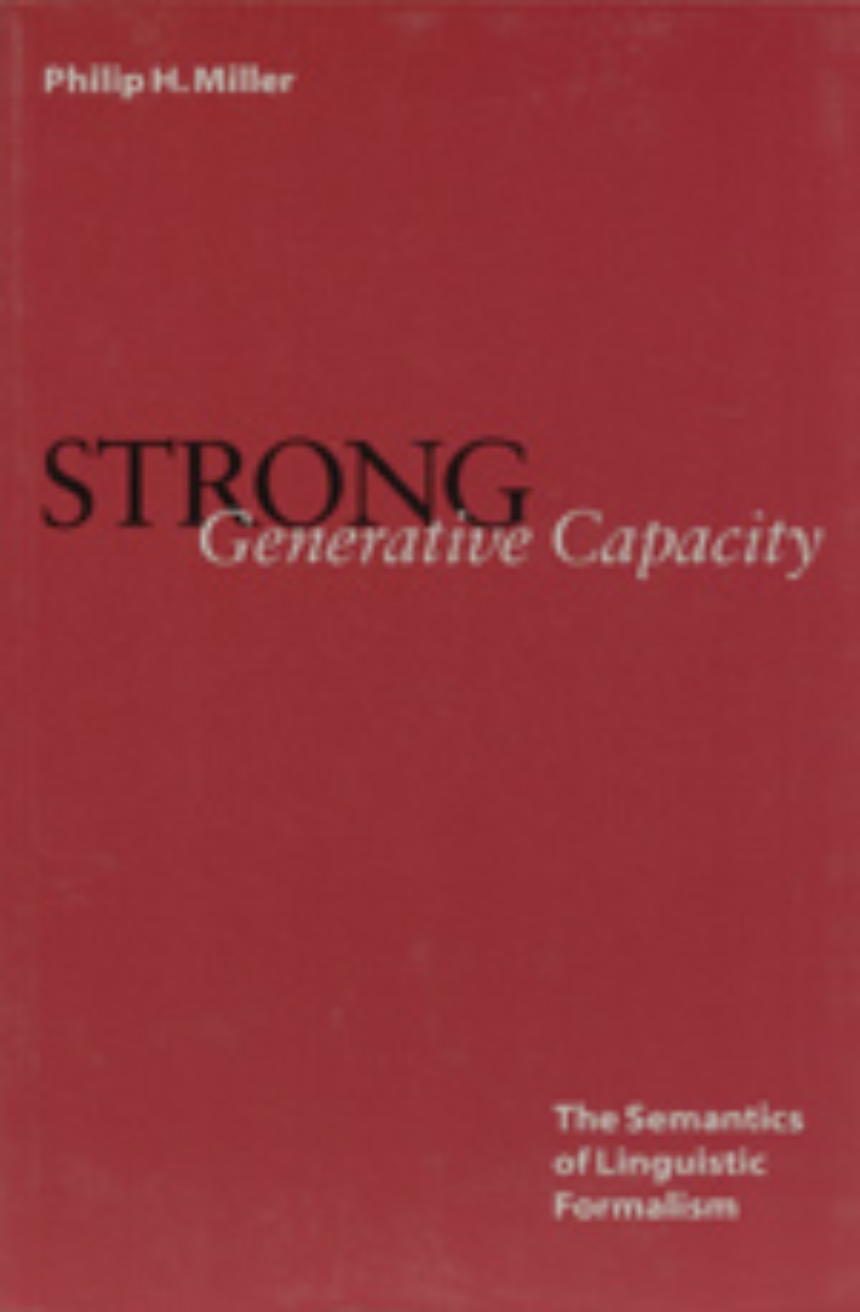Center for the Study of Language and Information
Strong Generative Capacity
The Semantics of Linguistic Formalism
9781575862149
9781575862132
Distributed for Center for the Study of Language and Information
Strong Generative Capacity
The Semantics of Linguistic Formalism
The concept of "strong generative capacity" (SGC) of a linguistic formalism was introduced by Chomsky in the early sixties in order to characterize descriptive capacity. However, the original definition proposed by Chomsky turned out to be unusable, especially when one wished to compare the SGC of different types of formalisms.
This book provides for the first time a rigorous and useful characterization of SGC, defining it as the model theoretic semantics of linguistic formalism. The book begins by reviewing classical definitions of weak and strong generative capacity. An in-depth discussion of how abstract interpretation domains are defined in theory-neutral set-theoretical terms is presented. The book also explains how interpretation domains are defined for labeled constituency, dependency, endocentricity, and linking, and applied to the analysis of a range of linguistic formalisms, among which are context-free grammars, dependency grammars, X-bar grammars, tree-adjoining grammars, transformational grammars and categorial grammars.
This book provides for the first time a rigorous and useful characterization of SGC, defining it as the model theoretic semantics of linguistic formalism. The book begins by reviewing classical definitions of weak and strong generative capacity. An in-depth discussion of how abstract interpretation domains are defined in theory-neutral set-theoretical terms is presented. The book also explains how interpretation domains are defined for labeled constituency, dependency, endocentricity, and linking, and applied to the analysis of a range of linguistic formalisms, among which are context-free grammars, dependency grammars, X-bar grammars, tree-adjoining grammars, transformational grammars and categorial grammars.
160 pages | 6 x 9 | © 2000
Language and Linguistics: Formal Logic and Computational Linguistics, General Language and Linguistics
Table of Contents
Preface
1. Classical Definitions of Weak and Strong Generative Capacity
2. Constituency, Dependency, Labeling and Ordering
3. Strong Generative Capacity: the Semantics of Linguistic Formalism
4. Constituency, Dependency, Ordering, and Endocentricity in Phrase Structure Grammars
5. Aspects of the Strong Generative Capacity of Categorial Grammars
6. Linking Systems
7. Conclusion
References
Index of Subjects and Abbreviations
Index of Names
1. Classical Definitions of Weak and Strong Generative Capacity
2. Constituency, Dependency, Labeling and Ordering
3. Strong Generative Capacity: the Semantics of Linguistic Formalism
4. Constituency, Dependency, Ordering, and Endocentricity in Phrase Structure Grammars
5. Aspects of the Strong Generative Capacity of Categorial Grammars
6. Linking Systems
7. Conclusion
References
Index of Subjects and Abbreviations
Index of Names

